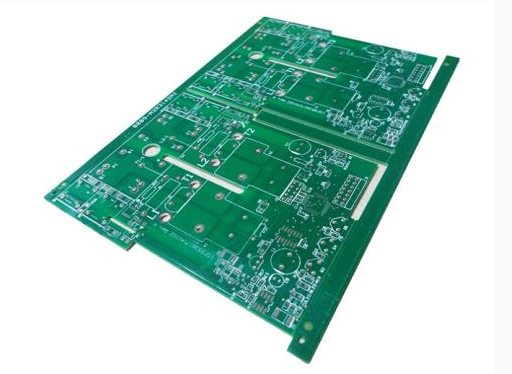Difficulty in the production of high-precision multilayer circuit boards1
High-precision multi-layer circuit boards are generally defined as high-multilayer circuit boards with 10 to 20 layers or more. It is more difficult to process than traditional PCB multilayer circuit boards, and its quality and reliability requirements are high. It is mainly used in industrial control and power energy., Medical, automotive, security, computer, consumer electronics, national defense, transportation, science and education research and development, automotive, aerospace and other high-tech fields. In recent years, as the market demand for high-precision multilayer circuit boards has remained strong, and with the rapid development of China's telecommunications equipment market, the market prospects for high-level circuit boards have been promising.
At present, domestic PCB prototypes are produced in small batches of high-level PCB manufacturers, mainly from foreign-funded enterprises or a few domestic-funded enterprises. The production of high-level PCB circuit boards not only requires high technology and equipment investment, but also requires the accumulation of experience of technicians and production personnel. At the same time, the introduction of high-level board customer certification procedures is strict and cumbersome. Therefore, the threshold for high-level circuit boards to enter the enterprise is high and the industry is realized. The chemical production cycle is longer.

The average number of layers of PCB circuit boards has become an important technical indicator to measure the technical level and product structure of PCB companies. This article briefly describes the main processing difficulties encountered in the production of high-level circuit boards, and introduces the control points of the key production processes of high-level circuit boards for your reference.
1. Main production difficulties
Compared with the characteristics of conventional PCB circuit boards, high-level circuit boards have the characteristics of thicker boards, more layers, denser lines and vias, larger unit sizes, thinner dielectric layers, inner layer space, and degree of alignment between layers., Impedance control and reliability requirements are more stringent.
⑴ Difficulties in drilling
Using high-TG, high-speed, high-frequency, thick copper special plates, increasing the difficulty of drilling roughness, drilling burrs and de-drilling. There are many layers, the cumulative total copper thickness and the plate thickness, the drilling is easy to break the knife; the dense BGA is many, the CAF failure problem caused by the narrow hole wall spacing; the plate thickness is easy to cause the inclined drilling problem.
⑵ Difficulties in production
Multiple inner core boards and prepregs are superimposed, and defects such as slippage, delamination, resin voids and bubble residues are likely to occur during lamination production. When designing the laminated structure, it is necessary to fully consider the heat resistance of the material, the withstand voltage, the amount of glue and the thickness of the medium, and set a reasonable high-level board pressing program. There are many layers, and the amount of expansion and contraction control and the compensation of the size factor cannot be kept consistent; the thin interlayer insulation layer can easily lead to the failure of the interlayer reliability test. Figure 1 is a defect diagram of the delamination of the plate after the thermal stress test.
⑶ Difficulties in alignment between layers
Due to the large number of high-level boards, the customer design side has more and more stringent requirements for the alignment of each layer of the PCB. Usually, the alignment tolerance between layers is controlled by ±75μm. Considering the large-scale design of the high-level board unit and the ambient temperature and humidity of the graphics transfer workshop, As well as factors such as misalignment and superposition caused by inconsistency of expansion and contraction of different core layers, interlayer positioning methods, etc., it is more difficult to control the degree of alignment between layers of high-rise boards.
⑷ Difficulties in the production of the inner line
The high-level board adopts special materials such as high TG, high speed, high frequency, thick copper, thin dielectric layer, etc., which puts forward high requirements for the production of the inner circuit and the control of the pattern size, such as the integrity of the impedance signal transmission, which increases the difficulty of the production of the inner circuit. Small line width and line spacing, more open and short circuits, more short circuits, and low pass rate; more fine line signal layers, the probability of missing AOI detection in the inner layer is increased; the inner core plate is thinner, which is easy to wrinkle and cause poor exposure and etching It is easy to roll the board when it passes the machine; most of the high-level boards are system boards, the unit size is relatively large, and the cost of scrapping the finished product is relatively high.